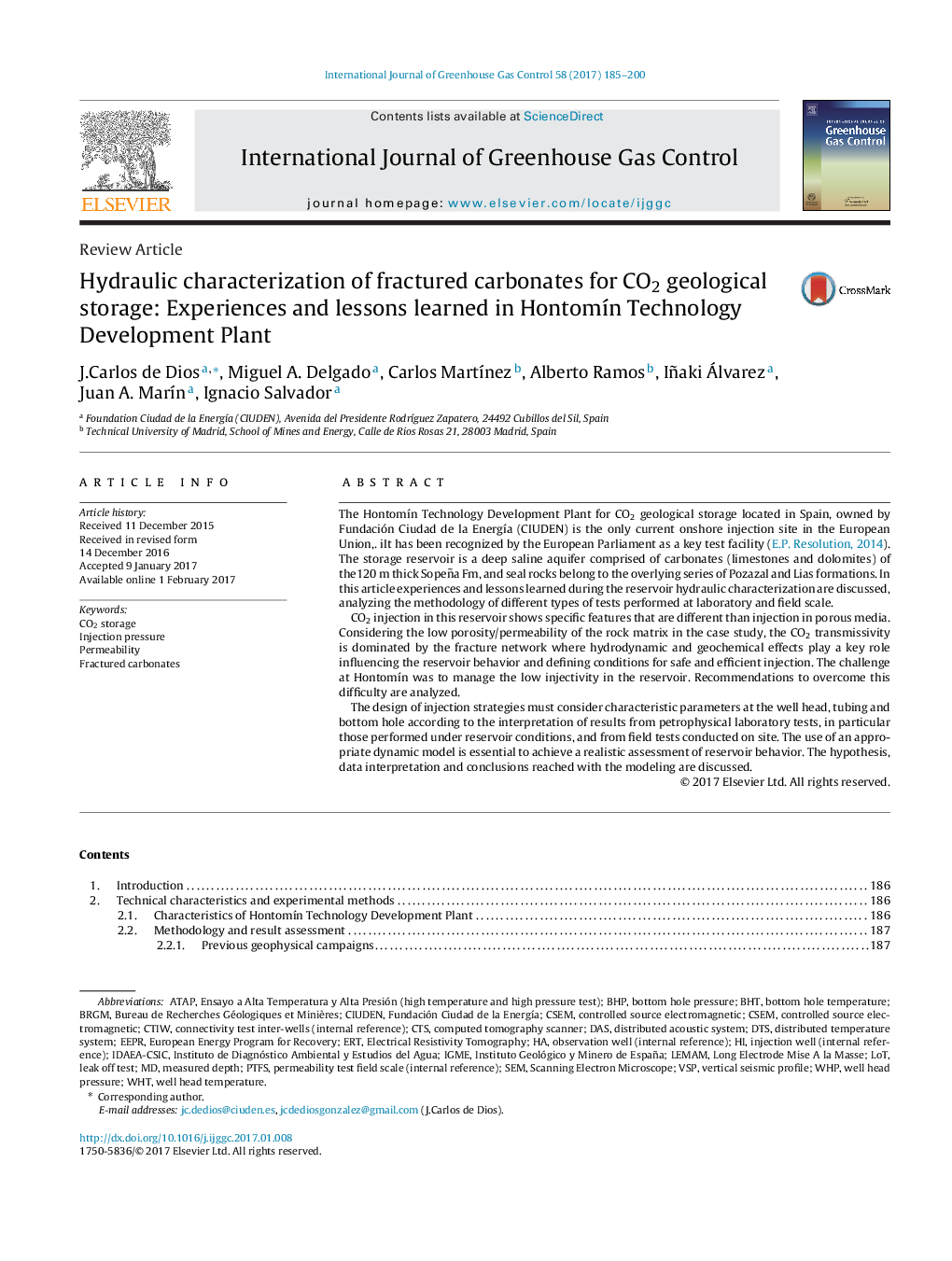| کد مقاله | کد نشریه | سال انتشار | مقاله انگلیسی | نسخه تمام متن |
|---|---|---|---|---|
| 5479128 | 1521961 | 2017 | 16 صفحه PDF | دانلود رایگان |

- HontomÃn Pilot is a saline aquifer formed by carbonates with poor matrix porosity.
- The goal was to enhance the low injectivity faced during the drilling phase.
- Injections of brine and CO2 (14,000 m3 of brine and 2,300 tons of CO2) were performed.
- Laboratory and model results suggest CO2 mainly flows within the reservoir fractures.
- Injection effects (i.e. hydrodynamic and geochemical) increased the permeability.
The HontomÃn Technology Development Plant for CO2 geological storage located in Spain, owned by Fundación Ciudad de la EnergÃa (CIUDEN) is the only current onshore injection site in the European Union,. iIt has been recognized by the European Parliament as a key test facility (E.P. Resolution, 2014). The storage reservoir is a deep saline aquifer comprised of carbonates (limestones and dolomites) of the120 m thick Sopeña Fm, and seal rocks belong to the overlying series of Pozazal and Lias formations. In this article experiences and lessons learned during the reservoir hydraulic characterization are discussed, analyzing the methodology of different types of tests performed at laboratory and field scale.CO2 injection in this reservoir shows specific features that are different than injection in porous media. Considering the low porosity/permeability of the rock matrix in the case study, the CO2 transmissivity is dominated by the fracture network where hydrodynamic and geochemical effects play a key role influencing the reservoir behavior and defining conditions for safe and efficient injection. The challenge at HontomÃn was to manage the low injectivity in the reservoir. Recommendations to overcome this difficulty are analyzed.The design of injection strategies must consider characteristic parameters at the well head, tubing and bottom hole according to the interpretation of results from petrophysical laboratory tests, in particular those performed under reservoir conditions, and from field tests conducted on site. The use of an appropriate dynamic model is essential to achieve a realistic assessment of reservoir behavior. The hypothesis, data interpretation and conclusions reached with the modeling are discussed.
Journal: International Journal of Greenhouse Gas Control - Volume 58, March 2017, Pages 185-200